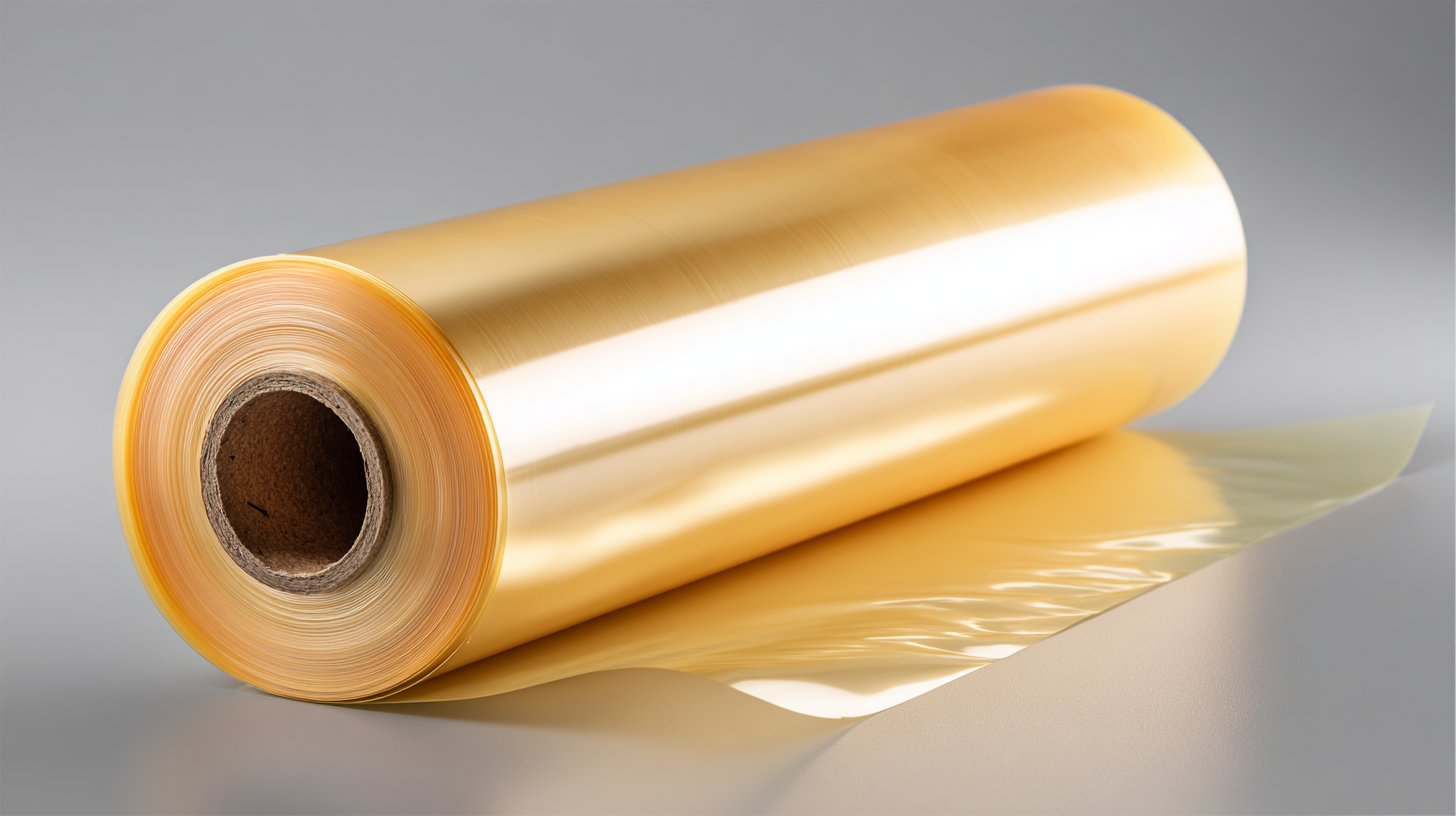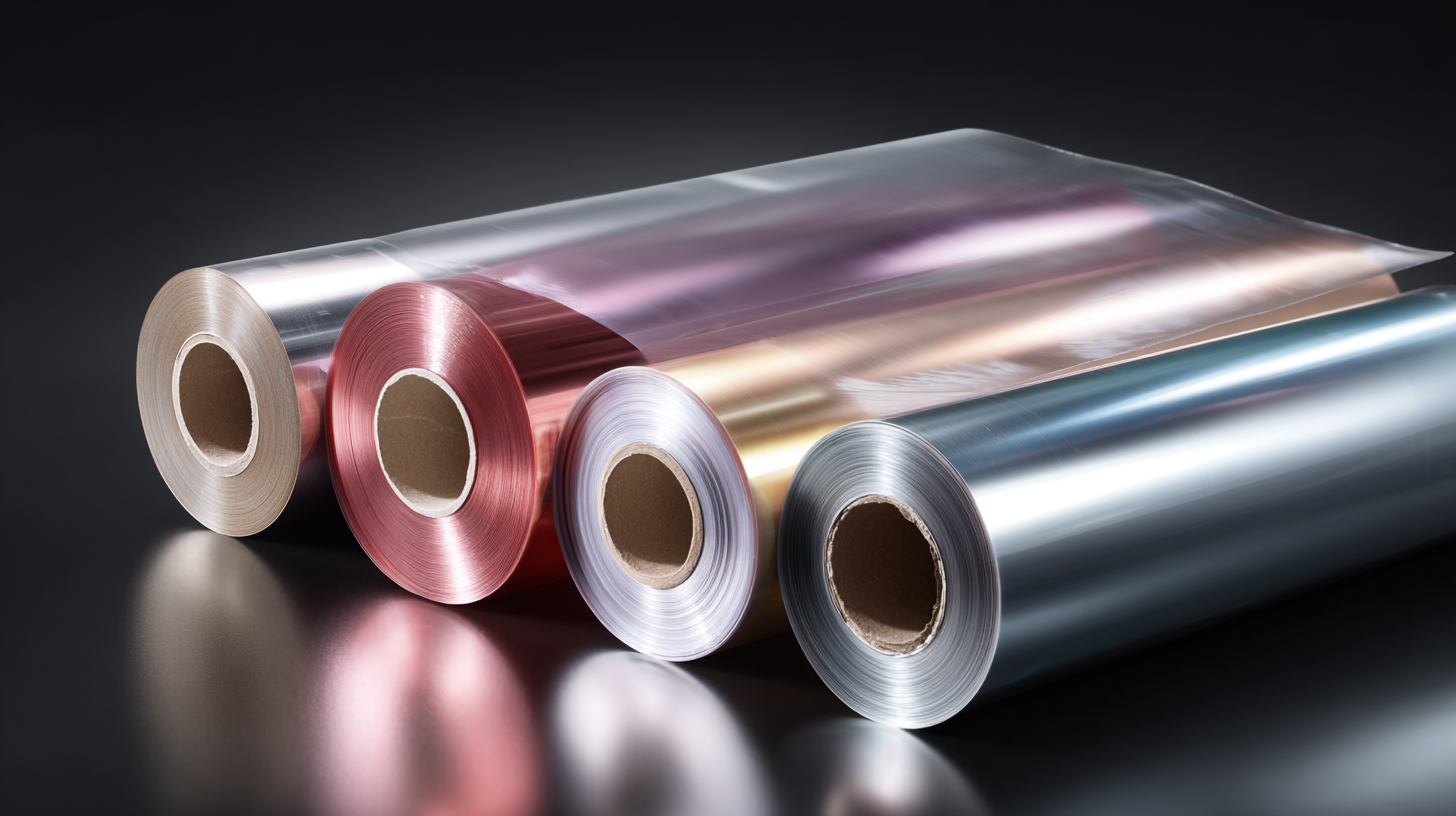
5 Reasons Why Best OPP Wrapping Film Should Be Your Top Choice
In the ever-evolving packaging industry, OPP Wrapping Film has emerged as a leader due to its superior qualities and versatility. According to a recent report by Smithers Pira, the global market for flexible packaging is projected to reach $300 billion by 2025, driven in part by innovations in materials like OPP films. With their excellent barrier properties, durability, and transparency, OPP Wrapping Films are increasingly favored for food packaging, retail, and industrial use. Furthermore, as sustainability becomes a key concern for businesses and consumers alike, the lightweight nature and recyclability of OPP films position them as an eco-friendly choice for modern packaging needs. This blog will explore five compelling reasons why OPP Wrapping Film should be your top choice, highlighting not only its technical advantages but also its alignment with future trends in the packaging landscape.

The Superior Clarity and Transparency of OPP Wrapping Film: A Comparison with Other Materials
When it comes to product packaging, clarity and transparency are essential factors that influence consumer perception. OPP (Oriented Polypropylene) wrapping film excels in this aspect compared to traditional materials like PVC and LDPE. Its superior clarity allows for an unobstructed view of the product, enhancing shelf appeal. This transparency not only showcases the item beautifully but also helps to maintain its visibility in a crowded marketplace, ultimately attracting more customers.
In addition to its remarkable clarity, OPP wrapping film also possesses a high gloss finish, which adds a professional touch that elevates the packaging quality. This makes it ideal for cosmetic products, gourmet foods, and other premium items that benefit from visual presentation. Furthermore, the strong mechanical properties of OPP ensure that the film holds its form, reducing the likelihood of wrinkles or distortions. As a result, businesses can confidently present their products, knowing that OPP wrapping film will provide both an attractive appearance and robust protection.
5 Reasons Why Best OPP Wrapping Film Should Be Your Top Choice
| Feature | OPP Wrapping Film | PVC Film | PE Film |
|---|---|---|---|
| Clarity | High clarity, enhances visibility | Moderate clarity | Low clarity |
| Eco-friendliness | Recyclable | Not easily recyclable | Biodegradable options available |
| Durability | High resistance to tearing | Moderate resistance | Low resistance |
| Cost-effectiveness | Affordable for bulk purchases | Higher initial cost | Very low cost |
| Versatility | Suitable for various applications | Limited applications | Best for food packaging |
Durability and Strength: Why OPP Outperforms Traditional Plastics in Packaging
When it comes to packaging, durability and strength are paramount, and OPP (Oriented Polypropylene) wrapping film emerges as a superior choice compared to traditional plastics. According to a study by the Flexible Packaging Association, OPP films demonstrate a tensile strength that is 30% higher than that of standard polyethylene films. This enhanced strength not only provides a robust barrier against external factors but also ensures that products remain protected during shipping and handling, reducing the risk of damage and waste.
Additionally, OPP films exhibit impressive resistance to temperature fluctuations and moisture. Research indicates that OPP maintains its structural integrity and performance in varying environmental conditions, making it ideal for both food and non-food packaging applications. The Packaging Institute reports that OPP’s moisture barrier properties lead to a shelf-life extension of up to 50% for packaged goods, benefiting manufacturers and consumers alike. With the increasing demand for sustainable and effective packaging solutions, OPP wrapping film's advantages make it an essential consideration for businesses looking to enhance their packaging strategy.
Eco-Friendliness of OPP Films: A Sustainable Choice for Modern Packaging Needs
The eco-friendliness of OPP (Oriented Polypropylene) films has become a key consideration in modern packaging solutions. With increasing awareness surrounding the environmental impact of packaging materials, OPP films stand out as a sustainable choice for businesses looking to reduce their carbon footprint. According to a recent report by Smithers Pira, the global market for sustainable packaging is projected to reach $400 billion by 2027, indicating a decisive shift toward eco-conscious materials. OPP films are not only recyclable but also produced from a material that can be sourced sustainably, making them a practical choice for brands focused on environmental responsibility.
Moreover, OPP films demonstrate impressive energy efficiency during production, consuming significantly less energy compared to other packaging materials. Research from the Packaging Association highlights that using OPP films can reduce material usage by up to 50% when compared to traditional films. This reduction in material waste not only lowers costs for manufacturers but also minimizes the environmental impact associated with the extraction and processing of raw materials. As consumers increasingly demand sustainable options, the adoption of OPP films in packaging can enhance brand image and fulfill market expectations while contributing positively to ecological preservation.

Cost-Effectiveness: Analyzing the Long-Term Savings with OPP Wrapping Film
When it comes to packaging solutions, cost-effectiveness is often at the forefront of decision-making. OPP (Oriented Polypropylene) wrapping film presents a compelling choice for businesses looking to maximize their budget without compromising quality. One of the advantages of OPP wrapping film is its durability, which means products remain protected for longer periods, potentially reducing the frequency of repackaging and associated labor costs. This long-lasting performance can lead to significant savings over time, especially for companies that deal with high-volume shipments.

Moreover, OPP wrapping film is lightweight, which can lead to lower shipping costs. When transportation expenses are a major part of the budget, using a lighter wrapping material can have a profound impact on overall logistics costs. Additionally, OPP's excellent clarity and aesthetic appeal can enhance brand presentation, potentially leading to increased sales and customer retention. By opting for OPP wrapping film, businesses not only enjoy the benefits of cost savings and improved efficiency but also elevate their product appearance, making it an all-around smart investment.
Versatility in Applications: How OPP Film Meets Diverse Packaging Requirements Across Industries
In recent years, OPP (Oriented Polypropylene) film has emerged as a versatile solution for packaging across various industries, addressing the growing demand for sustainable and flexible options. According to a report from Smithers, the global flexible packaging market is expected to reach $300 billion by 2027, reflecting a significant shift in consumer preferences. This shift is largely driven by the need for packaging that not only protects products but also meets environmental standards. OPP film stands out as a top choice due to its lightweight nature and ability to be produced with minimal waste, making it an eco-friendly alternative.
The versatility of OPP film extends to its applications, ranging from food packaging to non-food products. In the food industry, the use of OPP film can enhance shelf life while maintaining product freshness, as indicated by research from the Flexible Packaging Association which highlights that 80% of consumers believe that improved packaging keeps food fresher. Moreover, OPP film’s compatibility with various printing technologies allows brands to maintain aesthetic appeal while conveying essential product information. As industries increasingly adopt sustainable practices, the adaptability and efficiency of OPP film underscore its position as the preferred choice for modern packaging solutions.
